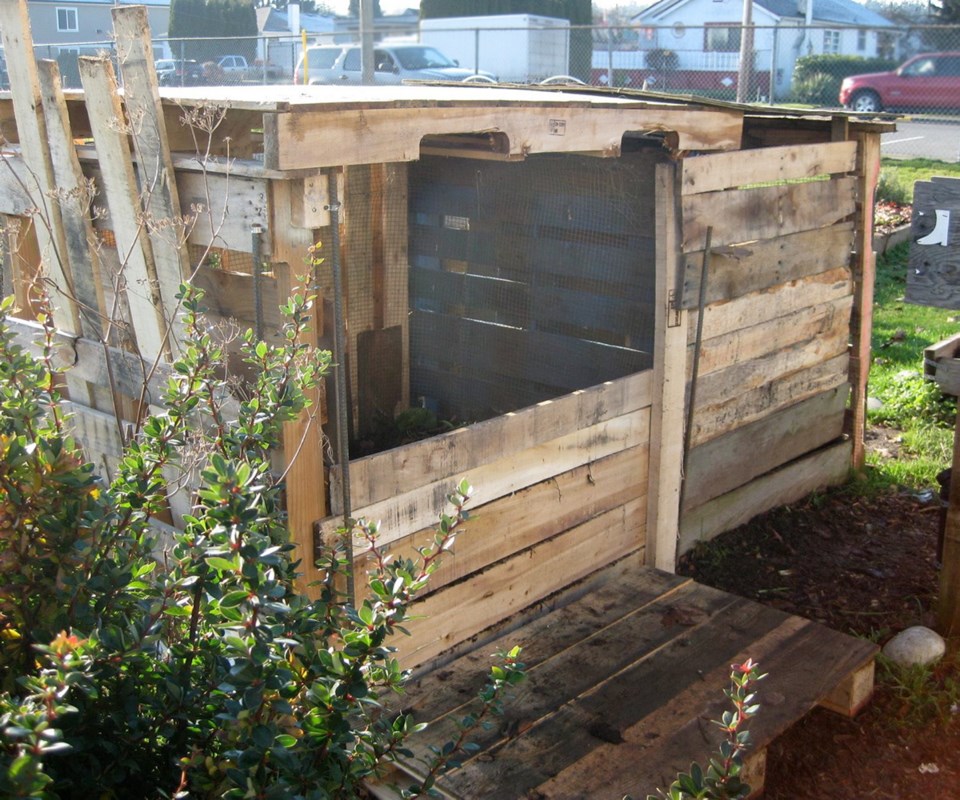Happily pared-down and simple, environmentally conscious and generous are terms that, in my view, describe the lives of my friends Heather and Gary.
About eight years ago, they sold their home and chose to rent a basic, inexpensive apartment in Duncan. They can walk or bike almost everywhere they need to go. They eat well, but simply, their meals highlighted by produce from several plots in a large community garden adjacent to their apartment building. Their plots produce enough for frequent donations to a nearby food bank.
Having a garden next door has made apartment living eminently palatable for my friends.
Our conversations always include current gardening issues, both successes and problems — and composting. Heather and I often comment on experiencing a similar sensation of marked well-being and “rightness” when working with our compost heaps. I certainly regard my series of compost enclosures as the heart and life blood of the garden.
In a pre-Christmas conversation, Heather described her late-autumn adventures in composting. At my request, she followed up the conversation with a detailed email. In her next-door community garden, the compost bins were originally tucked away behind the shed, she wrote.
“There were instructions on each bin, but they were rarely followed. Eventually, everything was thrown on: household materials from the neighourhood, grass clippings, weeds, sticks. Nearby residents began to notice rats, and the bins were closed down.”
When that happened, Gary started a few lasagna — or layered — composts in the garden beds, and did some trench composting. That yielded good results, wrote Heather.
“I feel strongly that composting should be done right in the centre of the beds, so that the process is seen as an essential part of gardening. I decided to build two bins using materials that I found nearby.
“I have always been a big fan of the Compost Education Centre in Victoria. I went to their website and found plans using recycled pallets. I also found quarter-inch mesh lying around the property, to line the bin interiors.
“I decided to purchase brackets to keep the sides together, some screws and four pieces of rebar that were cut for me. My husband joined in and collected pallets to dismantle so that we could build up the front end as the compost grew.
“I let all the community gardeners know that they are welcome to contribute their garden waste, but it needed to be cut in reasonably small pieces. Or, they could put it in a pile and I would cut it. We collect household waste from people in the apartments, as well as our own, but only raw vegetable matter, coffee grounds and washed, crushed egg shells.
“We started following the directions on the Compost Education Centre’s site for a hot compost, layering carbon- and nitrogen-rich materials. We collected fall leaves, grass clippings, comfrey and materials from the gardens as we cleaned up our beds.
“After about six weeks, we transferred the compost from the first bin into the second. The weather has been cold and the compost is no longer very warm, but it has broken down considerably.
“It has been satisfying to complete this project using mainly recycled materials. People walking through the area seem interested in what is going on. It’s been an educational project and sometimes good for a laugh. During the building phase, one day I was inside one of the bins checking on something and came out the front as someone walking her dog happened by. She chuckled and commented on how small they’re making houses these days.”
Many faces of compost
Composting can be done in many types of structure — bins, barrels, wire cages, slatted wood or brick enclosures — or in none at all. For many years, I simply created free-standing piles in various garden spots.
A few years ago, because I had a collection of large openwork cement blocks on hand, I decided to build a series of enclosures with the bricks along a side fence in the back garden, beginning in the corner where the side fence meets the back fence.
The five enclosures have suited this large garden well. When the one I’m building with chopped plant material has grown high, another is usually “finished” and ready to empty onto garden plots before it becomes the new repository for fresh materials.
In spring, I top two or three partly decomposed piles with garden soil and plant zucchini and/or pumpkin in them.



